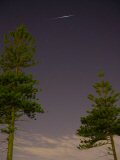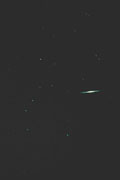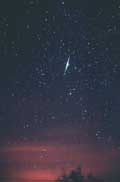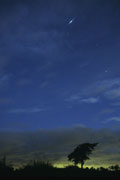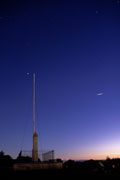IRIDIUM FLARES
A revolutionary system of man-made Earth satellites launched by
Motorola to provide a planet-wide communication system. Seventy seven satellites were
originally planned for launch, the name for the system or constellation, iridium,
was coined after the 77th element of the periodic table. The extremely high cost of
construction, launch and maintenance of the constellation, together with an
over-optimistic expectation of return-on-investment forced the company to file for
bankruptcy. Without maintenance the investment was doomed as the satellite's orbits needed
continual boosting to prevent eventual burn-up upon re-entry into the atmosphere. After
much discussion and intense bargaining a financing plan put forward by a group of
investors was accepted and the company is now known as Iridium Satellite LLC.
The system has been the cause of a long-running controversy as
it has added significantly to the number of satellites orbiting the Earth with
predictable impact on the work of ground-based observers. During each orbit sunlight
reflects off the highly polished satellite surfaces causing a cone of reflected sunlight
to sweep over the Earth. At night, a suitably positioned observer will see the satellite
initially as a faint "moving star" that grows rapidly in brightness and then
fades away, as the cone of light passes across the observer's eyes. These are known as
"Iridium flares" and can be as bright as a dazzling magnitude -8!
Below are some images of Iridium flares that have been captured
over the past few years.
|
